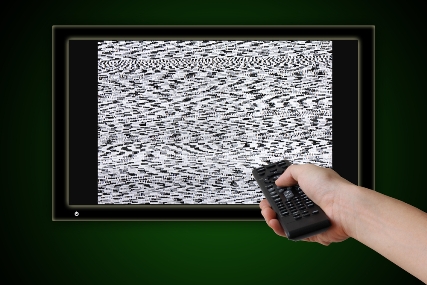If you think the consumer masses are happy with the quality of the pay-TV services they receive from cablecos, telcos and satellite operators, think again.
Service interruptions, picture freezes and tiling continue to plague operators and their displeased subscribers – an age-old scenario that has unfortunately shifted the focus to customer service, or lack thereof. It’s time to address the cause first and any remaining affect later.
While the 2013 J.D. Power customer satisfaction study focuses on rating and ranking providers by customer satisfaction of users in various geographic regions, a closer look at the results of the annual study is eye-opening as the root issues have not changed with time. It offers a chilling warning to TV providers that may mistakenly believe that lower priced alternatives is the sole reason their subscribers cut the cord – or consider it.
“Performance and reliability is the most critical factor driving overall satisfaction and meeting customer expectations,” J.D. Power stated. “Not only is loss of signal the most frequently mentioned service outage, but it also has the greatest negative impact on customer satisfaction and future loyalty.”
There are countless reasons for signal loss and other service outages ranging from in-home equipment to over-the-air and over –a- terrestrial-network transmissions. Problems with picture quality also have numerous known causes.

Image via Shutterstock
(Another) Wake-Up Call
Key findings from the J.D. Power report support and shine a bright spotlight on service interruptions. Approximately two-thirds (67 percent) of customers have experienced some type of service outage during the past 12 months, with 51 percent experiencing loss of signal. Other types of service outages experienced by customers include picture freezing (38 percent), post channel picture delay (26 percent) and picture tiling (19 percent).
“As customers expand their use of alternative video service, such as over-the-top service providers Netflix and Hulu, it's important for cable and satellite TV providers to minimize service quality issues to reduce the likelihood of future customer defection,” said Kirk Parsons, senior director of telecommunications at J.D. Power, in prepared comments.
But are providers getting the signal or does it seem they are overly focused on customer retention via TV Everywhere and seemingly never-ending triple play direct mail and TV bombardments? I have yet to see TV reliability mentioned. Verizon does tout FiOS TV picture quality.
“The 2013 U.S. Residential Television Service Provider Satisfaction Study” is based on responses from 22,593 customers nationwide who evaluated their cable, satellite and Internet protocol (IPTV) television providers, according to J.D. Power. The company says the study measures customer satisfaction based on the following factors: performance and reliability, cost of service, programming, billing, communication, and customer service. It was fielded in four waves: November 2012, January 2013, April 2013 and July 2013.
Network Evolution
Initially, many service providers opted to introduce this new, high-bandwidth service and features over current networks, with limited investment in infrastructure because CAPEX is often a dirty word, especially in tough times.
Enlightened providers, however, upped the bandwidth ante by installing more fiber in metro and last-mile networks along with the broadband access equipment to control it. This helped stem the tide of delivery problems associated with TV, but was a finger in the dyke given the bigger waves of streaming video.
Rather than address TV delivery on a piecemeal basis, many service providers chose to re-architect their networks from core to edge to address the need for bandwidth-bottleneck-free TV delivery to consumers.
This entailed adding more than bulk bandwidth, however, with TV providers strategically locating video servers to better serve customer groups and Video-on-Demand (VoD) servers in regional farms as demand for non-appointment TV and pay movie purchasing began to climb. Caching content became popular.
What Quality?
Because we are talking about TV picture, and not data or voice transmission, many service providers found themselves all but flying blind when attempting to even effectively monitor the viewer experience. Software smarts needed to be added to the equation to begin to address this huge missing link.
Initially, TV providers turned to diagnostic tools to address problems as much as monitoring tools to identify them. That didn’t put a big dent in the continuing problem or please increasingly frustrated consumers who responded by hitting ill-prepared call centers harder than boxers hit heavy bags.
While quality of service (QoS) packages worked well with data and voice services, they didn’t provide sorely needed insight (or any sight) into the picture TV viewers ultimately received. A telco engineer friend of mine told me that early on in his TV deployment, he would often dispatch a tech to a subscriber’s residence after a problem call to watch TV with the viewer to get a clear picture of the problem. While effective, the manual approach is little else.
Hope and Change
Picture quality focused packages and software to ride atop advanced routers and other infrastructure provide brains-and-brawn weapons to combat picture quality and outage problems. Quality of Experience (QoE) offerings and real-time monitoring and management capabilities together address part of the core problem – continued customer dissatisfaction with service performance.
TV providers are not oblivious to the seemingly never-ending issue, nor have they been unwilling to invest in addressing it. Delivering high-quality, consistent TV service is but one of the pressing priorities pulling operators in many directions concurrently.
The Bottom Line
The J.D. Power numbers don’t lie. And comments based on the survey results represent a stern and chilling warning to TV providers who have work to do now to avoid losing customers later. Because the volume of streaming video continues its skyward climb, investment in smart infrastructure and real-time management and correction packages needs to increase as well.
Operators trying to do more with just a little more to deliver TV services have likely already learned tough lessons. Given the super-rapid proliferation of higher-definition, big-screen TVs in and throughout households and businesses an end-to-end approach to network planning and management is required in tandem with a spend-not-pretend action plan.
Edited by
Alisen Downey